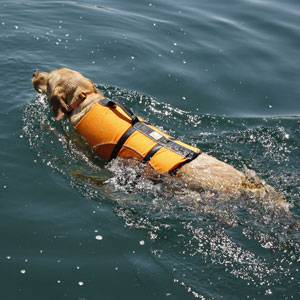Kayaks are awkward and heavy to lift, so transporting a kayak to the lake can be challenging. Utilizing a J-rack is one of the most popular ways to transport a kayak to and from your favorite spot. This guide will be discussing how to tie down a kayak on a J-rack.
There are many ways to transport a kayak, especially if you have a truck. If you own an inflatable kayak, then transporting the kayak is simple enough.
Using a J-rack is the best way to transport your kayak for those who have a whitewater kayak or some other variation.
Table of Contents
What is a J-Rack?
J-racks can also be called J-cradles, and they are named that due to the shape of the rack: it’s shaped like a J. The J-rack cradles your kayak when the kayak is laid on its side on the roof of your vehicle.

This type of roof rack bar system is extremely popular amongst kayakers because they can sit on the existing crossbar system on your vehicle. So, if you already have a crossbar roof rack system on your car, installing J-racks is easy to do. Depending on the J rack configuration, you can sometimes carry multiple kayaks at one time.
The J-racks have foam pads on the bottom and upright portion of the cradle to protect your kayak from scratching your car’s roof or slipping off completely.
What Type of Vehicle is a J-rack Best for?
A J-rack can be used on various types of vehicles, including trucks, SUVs (small and large), sedans, and compact cars. However, using a J-rack on a taller vehicle, such as a truck or SUV, can be difficult because you have to reach higher to install the kayak in the J-rack system.
So, it’s generally better to use a J-rack with a smaller vehicle because it’s easier to lift the kayak into the roof rack system.
Additionally, vehicles that already have a crossbar system installed on the vehicle’s roof are better for J-racks. This is because you can easily install the J-racks and be on your way. If your vehicle doesn’t have a crossbar system, you can install one, but this can get very expensive.
How to Install a J-rack System
Installing a J-rack system is straightforward: the system has a clamp that mounts to the crossbar system on the top of your vehicle. J bar roof-rack systems generally include an adapter, which means they can fit on all types of crossbars.
Adapters are good to have because crossbar systems can be round or square, and to install a J-rack, you need to clamp the rack to the crossbars.
How to Tie Down a Kayak on a J-rack
Now that your J-rack is secured to the crossbar system on the roof of your vehicle, it’s time to load your kayak(s). This next section will discuss how to tie down a kayak on a J-rack.
Note that much of what we discuss will depend on how heavy and big your kayak is and if you can lift it by yourself. It’s always much easier to lift and install a kayak on a J-rack with someone else.
The following are general instructions; tweak them as you need to fit your needs.
Step 1: Put Straps On the J-rack
Once you’ve installed the J-racks on the roof of your vehicle’s crossbar system, loop your heavy duty strap through the upright part of your J-rack. Pull the straps in line with the rear and front of your vehicle.
Doing this will make strapping your kayak in much easier because you won’t have to wrestle with the heavy duty strap system to get the strap in place.
Step 2: Position Your Kayak on the Ground
It’s so much easier to position your kayak when it’s on the ground instead of lifting it on the rack system and fighting to get it in position. We are going to discuss loading your kayak from the side.
First, you must have your kayak position before you lift the kayak. This way, you only have to lift the kayak once to get it into position on the J-rack.
When loading from the side, you should have the kayak lying on the ground next to your vehicle with the kayak bow facing the front of your car.
Step 3: Loading Your Kayak from the Side
To load your kayak from the side of your vehicle, you must have your kayak in position on the ground.
After positioning the kayak, it’s time to start lifting. Some kayakers will lift their kayak from the coaming, and they do this by cradling the coaming with their shoulder and hand before lifting the kayak into the J-rack system. Other people will lift their kayak in a clean and press or deadlift motion.
It will take some time to figure out the lifting process that works for you but loading your kayak will be a breeze once you figure it out.
Once your kayak is at the same height as the J-rack, you can rest the kayak against the side of the rack system and push the boat into place.
If you have a heavy or long kayak, there’s another method you can try. But before trying this following method, drape a bathroom mat with a rubber bottom or towel over the side of your vehicle.
To begin, position your kayak on the ground next to your vehicle with the bow facing the front of the vehicle. This time, the back of your kayak should be at an angle away from your vehicle. Then, you’ll want to lift the front of your kayak and lean it against the front J-rack.
Note that the side of your vehicle is protected with a bathmat or towel. So, you can use the front J-rack to hold the bow of your kayak while you start lifting the back of the kayak.
As you begin lifting the stern of your kayak, you can slide it forward and into the front J-rack. Then put the back of the kayak into the back J-rack.
Step 4: Distribute the Weight Evenly
Place your kayak in such a way that the weight of it is being evenly distributed between the J-racks. If the kayak is too far backward or forward, it can be a problematic transporting experience. If you have a long kayak, try your best to distribute the weight.

Step 5: Strap Down the Kayak
A cam strap is the best way to secure your kayak into place, plus they’re easy to use and will securely hold your kayak while you drive. But you need to be careful when you tighten your cam strap.
You want the cam strap to be snug, but you don’t want it to be too tight. Otherwise, it can damage your kayak.
You also want both cam straps on top of your kayak. To do this, lasso both of the cam straps over the stern and bow of your kayak, so they’re on the top of your kayak.
Then you’ll want to position the cam straps so the buckle is lined up with one side of your crossbar system. The other end of the cam strap should be lined up with the other side of the crossbar.
Make sure that the cam strap buckle is within reach and high enough to pull the cam strap tight. Loop the other end of the cam strap under the crossbar to connect with the buckle.
You want to have the cam strap buckle on one side of your vehicle’s crossbar, with the other end under the crossbar, so you have a tight fit.
Repeat this step on the back of the kayak.
Step 6: Rear and Front Tie Downs
Most of the time, you can hook a cam ratchet strap to the handle on the rear or front of your kayak and then find an attachment point on the back or front of your vehicle. This will help ensure that your kayak stays in place when you’re driving.
It can sometimes be difficult to find a tie-down point on the front of your vehicle. So, often, people will purchase anchor straps that fit under your vehicle’s hood and give you an anchor point for the front of your kayak.
View this video for more information on how to tie down a kayak on a J-rack.
Bottom Line
Using a J-rack requires some planning, but it’s possibly the best way to transport your kayak once you know how to use a J-rack.
Make sure that you go slow and take your time trying to tie down your kayak using a J-rack, and always ensure that your kayak is secure before going on your trip.



